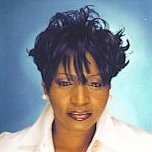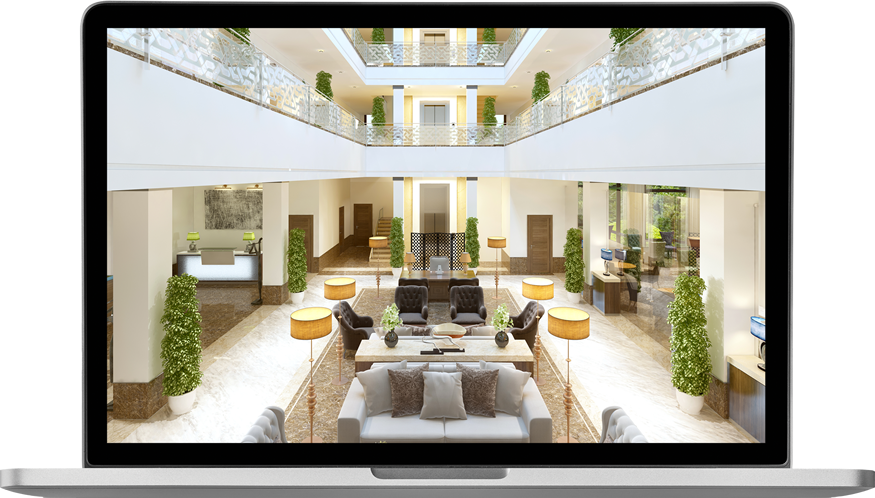Good job! Your SEO efforts, referral link campaigns, social media marketing, PPC campaign, and email marketing did their job and got a prospective guest to visit your site. Now all you have to do is convert them from a prospective guest to an actual guest.
I will share with you some principles of conversion rate optimization I have learned over the years. Blue Magnet has started incorporating these principles into our methodology and has been using them on our client websites for the past couple of years. You can begin implementing these principles on your own website starting today.
Before I jump into the thick of it, here is the foundation we will be working from. Most hoteliers expect their website to generate revenue. Revenue is generated through the process of:
- Attracting visitors to the site through referral links, organic search, social media, email marketing, skywriting, sign spinners, and begging.
- Once the visitor is on the site, the images and the copy convince the visitor to take an action: check the rate on a room, submit an RFP form, sign up for a newsletter, or follow the hotel on social media.
- When the user takes the desired action, we call that a conversion. Not every conversion is equivalent. A check rate conversion that results in a reservation is more valuable than a check rate conversion that does not result in a reservation.
Search engine optimization helps a site get the traffic and conversion optimization turns the traffic into revenue. In terms of conversion optimization, we are trying to accomplish to distinct tasks: convince the visitor who is on the fence to convert and remove elements which could prevent, dissuade, or derail a visitor from converting.
The following are simple tips which can be implemented today and immediately help your hotel improve conversion.
4 Ways To Increase The Conversion Rate on Your Hotel Website
Tell The Visitor What to Do
It sounds bossy, it is bossy, but when visitors are on your hotel’s website, your images and copy need to make it clear what you want the visitor to do.
Each page serves a different function, and the call-to-action on each page needs to be aligned with that function. A page about the hotel’s wedding space needs to direct the visitor to fill out the RFP form so the hotel can help them take the next step. The specials page needs to get the visitor to book one of the available packages.
Meanwhile, a page about the area around the hotel needs to convince the visitor to explore the hotel’s rooms and amenities.
Go through your website right now and take a look at each page. What is the purpose of that page on your website and is it clear what you want visitors to do when they are on that page?
Too often in digital marketing, some pages become a junk drawer. We do not really know the purpose of the page so we keep loading it up with options. The page ends up with three or four calls-to-action that are not even complimentary to each other and it leaves the visitor with a sense of choice paralysis.
Take the visitor by the hand, and guide them to the next step in the conversion funnel.
Remove Unnecessary Distractions
We know each page serves a different function, and some pages have a more important function than others.
In analyzing just over 100 websites, one of the most valuable pages for a hotel website is the rooms page. It is usually the page that produces the second most amounts of conversions, after the index page.
Take a look at your rooms page on your site. Do you see anything moving, like a slider of multiple images? A movie? Anything like that?
Carousels, sliders, and other nifty web design components make your site look better. They also kill conversion.
According a Barry Dainton in the paper “Temporal Consciousness” published in 2016 Winter issue The Stanford Encyclopedia of Philosophy:
Just as there are regions of the brain’s visual systems that specialize in colour (e.g. V4), there are other regions – V3 and V5 (or MT) – that specialize in motion detection. What is more, some of the systems and pathways devoted to motion are – in evolutionary terms – among the more primitive parts of the brain.
The primitive brain is the part of our brain that developed the earliest and those brain functions tend to have primary control. It is in this part of the brain we find our ‘fight or flight’ mechanisms. Motion is part of that same system as motion was usually the first sign of a potential attack by a predator, or the potential of a meal from prey.
Our vision is very sensitive to motion and anything moving on the website is bound to be the first thing attracting our attention. If the motion isn’t tied directly to the next step in the conversion process, then it very well could be distracting the visitor from the conversion process.
The goal is to remove friction. Make it easy for the visitor to convert. Get rid of motion on your valuable pages.
Encourage Visitors to Jump on the Bandwagon
Some of you might have once heard the old phrase, “If all of your friends jumped off a bridge, would you?” when growing up. I never really gave it much thought in terms of what it would mean if everyone I was friends with jumped off a bridge until I read this comic.

At the end of the day, I do trust the wisdom of my peers and if they were jumping off a bridge I was on, I would join them.
The bandwagon effect is the term used to describe how people follow the actions of others. The more people who take an action, the more likely others will take a similar action. There is debate about whether this stems from a desire to conform or from intuitive information gathering. I am not here to discuss root causes, just how to use this effect to help with conversion.
Using social proof, testimonials, and reviews will demonstrate to the visitor others trust and have done business with you. Some websites create a testimonials page, but trying to get that page to fit into a conversion funnel is difficult – what action do we want the visitor to take on that page?
Weaving testimonials, reviews, and social media follower and engagement metrics around the call-to-action, around the reservation widget, around the check rate button, helps remove some of the feelings of risk around taking the action.
Hey, if all these other people clicked this button, stayed at this hotel, enjoyed their visit, then I might as well, too!
Engage the Visitor with a Story
There are many, many studies done on the effect of storytelling on our brains. When we read a list of facts, we process the list with our very powerful brains. We are able to analyze, compare, contrast, and be very intelligent. In biological terms, we are engaging our language center of the brain, and nothing else.
A story, a narrative, causes our brains to work harder, be more engaged. There are a bunch of parts of our brains, like mirror neurons, that react to stories and make us feel the experience of the story we are reading or hearing.
Consider that single fact for a moment from the point-of-view of a hotelier.
Someone who has never stayed at your hotel, who does not have the chance to visit the hotel before making the decision to stay there can be made to experience what a stay at the hotel is like through the use of story.
Wrap up the main selling point of your hotel in a story. Is it the convenient location to a vibrant downtown or a quaint section of town? Is your hotel known for having a robust wellness program?
These are not bullet points to list out on a website, they are the building blocks for a compelling story where the visitor is the protagonist, eating at a nearby trendy restaurant, walking through a farmer’s market, renting a bicycle to tour the city, or enjoying a beer from a bucket while watching the playoffs on a big screen TV.
You have a chance to give the visitor a sense of what it is like to stay at the hotel before they are actually there. Walk them through the entire experience of checking in. How are they greeted? What does the lobby smell like? Tell them what walking into the room will be like, the colors, the sounds, the feel of a cool air conditioner after a hot cab ride from the airport, and the smell of the specialty bath products put in their room for their convenience.
Engage in the full brain, not just the language center. Provide an experience before they book the room. Give them a sense of loss-aversion.
I used to do marketing for a wine store and once the store got extremely busy. I worked in the back, updating the website, doing social media, and all that mysterious digital marketing stuff. The only thing I knew about wine was I liked some of it, did not like others. When the manager asked if I would help out, I was more than nervous. I did not want to make a fool of myself or in some way anger a customer with my lack of knowledge.
The manager told me the best trick to selling wine was get the customer to hold the product. The customer wants a Cabernet, pull a mid-range bottle from the rack, hand it to him and tell him I had the chance to sample it from the winemaker a few weeks earlier and how much I enjoyed it. I did not have to go into the wine jargon our professional sommeliers were able to do, I just had to give a solid recommendation about the wine and get the bottle in the customer’s hand. People have a very hard time giving up what they have. There are a volumes of studies around the concept of loss aversion, but all we really have to know is people don’t like giving up something they already have. A bird in the hand is worth two in the bush.
Hotel rooms can not be held, but due to the weirdness of our brains, and how hearing a story about an experience provides the same emotional and chemical reactions as experiencing it for ourselves, it is possible to get close to putting the website visitor in the lobby of your hotel, in a luxury suite, and at a table in your restaurant. If the story told is engaging enough, it will trigger the feeling of loss aversion. Why risk staying at another hotel when the visitor has already ‘experienced’ this hotel and enjoyed it?
Go to the rooms page on your website and look at the copy you used on the page to convince the visitor to book a room. If it is a list of bullet points no different from any other hotel website, try transforming it into a narrative. Tell a compelling story about the room to make the visitor experience it. Make the copy ‘put the room in their hands’ and see how few are willing to put it down.
You Are Just Getting Started
These are four ways to boost the conversation on your website which you can implement right now. When you start exploring the concepts of neuromarketing and how our brains help and hinder us in decision making processes, you can go down a deep rabbit hole.
While I have only presented 4 ideas in this blog post, I assure you these are only the tip of the iceberg. If you are only to take away one concept from this blog post, it should be the first point – make every page on your website perform a job with a specific call-to-action. Everything else stems from that concept. If you do implement any of these ideas, I would love to hear from you and see what you did. Connect with me on LinkedIn and if you want assistance in making these kinds of changes to your website, connect with us. We would love to discuss the goals of your website and how conversion optimization along with our other integrated marketing services can help achieve them.




